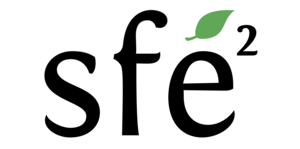Food webs in spatial webs: how do these two types of networks interact to influence ecosystem functioning?
The increasing fragmentation of habitats as a result of human activities is one of the major causes of biodiversity loss. Understanding how the arrangement of habitat patches into spatial networks resulting from this fragmentation affects species interaction networks and ecosystem functioning is central to the implementation of effective habitat management strategies. For example, this knowledge is essential for assessing how the creation of dams on rivers can affect the dynamics of species at different trophic levels or, in a terrestrial context, for understanding how the spatial footprint of agricultural activities can maintain or deteriorate interaction networks.
This thesis project is included in the ANR WINE project (Webs of Interactions NEtworks, funded over the period 2023-2027) and aims to develop and analyze theoretical models of spatialized food webs to better understand the ecological mechanisms that link the properties of interaction networks and their spatial dynamics.
The thesis project will be structured along two lines of research:
- How the connectivity and heterogeneity of habitat patches in different realistic network models (random geometric graph, dendritic network) affects the structure and properties of local food webs (maximum trophic level, biomass distribution, species diversity and generalism, …).
- How food web structure, mobility and dispersal capacity of species at different trophic levels influence net biomass and nutrient flows between habitat patches (effective connectivity).
To address these issues, we plan to develop a model for simulating species abundances in a food web, based on the generalized spatialized Lotka-Volterra model (ODE systems), and incorporating allometric relationships linking species body size to their biological rates. This formalism will enable theoretical results to be generalized to different systems, and linked to data (studied in another part of the ANR). To study the second part, the model will be refined to integrate the different types of organism movement (dispersal vs. foraging) and nutrient dynamics (recycling).
Integration into the WINE project
The WINE project in which the thesis is integrated is a collaborative ANR project which aims to better understand how the spatial and trophic structures of species networks interact through three different approaches (each corresponding to a different work package: theory and mathematical models (WP1); experiments in microcosms (WP2); analysis of existing data (WP3).
The present thesis project is part of WP1, which will also involve the recruitment of a post-doctoral fellow who will focus on the evolutionary aspect of the questions posed. The person recruited for the thesis will take part in ANR project meetings and will thus be able to benefit from interactions with people working on other aspects of the project.
Candidate
We are looking for a candidate with a Master’s degree in ecology, mathematics for life sciences, or physics, with a taste for theoretical questioning (ability to abstract and step back from major ecological issues) and modeling skills (dynamic systems). We’re looking for a self-motivated, autonomous individual with a solid command of English and good writing skills. We are also looking for candidates with good communication, teamwork and interpersonal skills, which will facilitate integration into the thesis project.
Working environment
The thesis will be based at Sorbonne Université (https://www.sorbonne-universite.fr/) on the Jussieu campus, at the Institut d’Écologie et des Sciences de l’Environnement de Paris (iEES-Paris: https: //iees-paris.fr/). Sorbonne Université is a multidisciplinary, research-intensive, world-class university. The campus, located in the heart of Paris, next to the Jardin des Plantes and the Muséum National d’Histoire Naturelle, offers a rich scientific environment for Sorbonne Université’s 55,300 students, promoting diversity, creativity, innovation and openness to the world. iEES-Paris is a large research unit bringing together around a hundred researchers, teacher-researchers and professors with a wide range of expertise (https://iees-paris.fr/). Weekly seminars, scientific days and a student integration retreat are organized within the laboratory, as well as regular team meetings, facilitating the integration of doctoral students into a rich scientific environment, benefiting from an excellent working atmosphere.
Supervision
The thesis will be supervised at iEES-Paris in the Ecologie et Evolution des Réseaux d’Interactions team (EERI: https: //iees-paris.fr/equipes/reseaux-d-interactions/) by François Massol and Isabelle Gounand. Meetings will be organized with participants in the WINE project, particularly those involved in the theoretical part, to ensure the smooth integration of the thesis into the ANR project.
Contacts
François Massol : francois.massol (at) cnrs.fr
Isabelle Gounand : isabelle.gounand (at) sorbonne-universite.fr
How to apply
Interested candidates are asked to send a CV, a covering letter explicitly mentioning the names and contacts of two referees, and their transcripts for all post-bachelor degree grades and rankings, in a single PDF file, to both supervisors’ e-mail addresses: francois.massol (at) cnrs.fr and isabelle.gounand (at) sorbonne-universite.fr by May 15.
Deadline: May 15
Starting date for the PhD : September-October 2024
References
- Ockendon, N. et al. Mechanisms underpinning climatic impacts on natural populations: altered species interactions are more important than direct effects. Glob Change Biol 20, 2221-2229 (2014)
- Calcagno, V. et al. Constraints on food chain length arising from regional metacommunity dynamics. Proc R Soc B 278, 3042-3049 (2011).
- Gravel, D. et al. Stability and complexity in model meta-ecosystems. Nat Commun 7, 12457 (2016).
- Ryser, R. et al. Landscape heterogeneity buffers biodiversity of simulated meta-food-webs under global change through rescue and drainage effects. Nat Commun 12, 4716 (2021).
- Akjouj, I., Barbier, M., Clenet, M., Hachem, W., Maïda, M., Massol, F., Najim, J. & Tran, V. C. (2024) Complex systems in ecology: a guided tour with large Lotka–Volterra models and random matrices. Proceedings of the Royal Society A: Mathematical, Physical and Engineering Sciences, 480, 20230284.
- Peller, T. et al. Traits affecting nutrient recycling by mobile consumers can explain coexistence and spatially heterogeneous trophic regulation across a meta-ecosystem. Ecol Lett 25, 440-452 (2022).
- Trebilco, R. et al. Ecosystem ecology: size-based constraints on the pyramids of life. Trends Ecol Evol 28, 423-431 (2013).
- Barbier, M. & Loreau, M. Pyramids and cascades: a synthesis of food chain functioning and stability. Ecol Lett 22, 405- 419 (2019 )

Commentaires récents